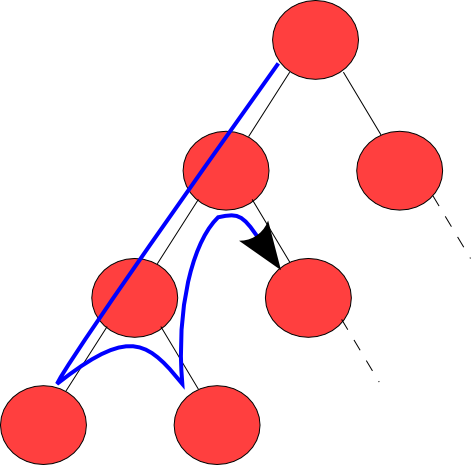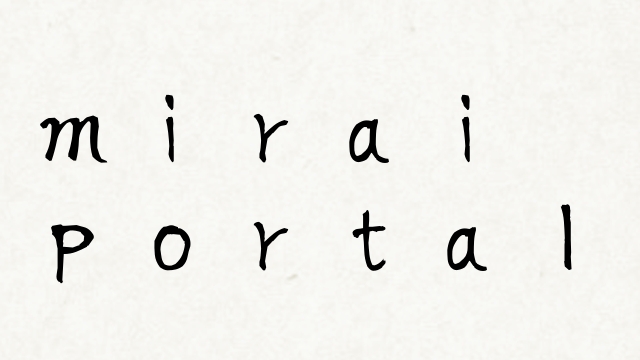探索していない通路を「-1」として表現して
スタートからゴールに到達するまで深さ優先探索で迷路を探索し、
探索した通路はスタートからの距離に数値を置き換える。
import sys
import random
from collections import deque
class Maze:
PATH = 0
WALL = 1
def __init__(self, width, height, seed=0):
self.width = width
self.height = height
if self.width < 5 or self.height < 5:
sys.exit()
if self.width % 2 == 0:
self.width += 1
if self.height % 2 == 0:
self.height += 1
self.maze = [[self.PATH for x in range(self.width)] for y in range(self.height)]
self.dist = [[-1 for i in range(self.width)] for j in range(self.height)]
self.start = [1, 1]
self.goal = [self.width-2, self.height-2]
random.seed(seed)
def set_outer_wall(self):
for y in range(0, self.height):
for x in range(0, self.width):
if x == 0 or y == 0 or x == self.width-1 or y == self.height-1:
self.maze[y][x] = self.WALL
return self.maze
def set_inner_wall(self):
for y in range(2, self.height-1, 2):
for x in range(2, self.width-1, 2):
self.maze[y][x] = self.WALL
return self.maze
def set_maze_boutaoshi(self):
self.set_outer_wall()
self.set_inner_wall()
for y in range(2, self.height-1, 2):
for x in range(2, self.width-1, 2):
while True:
wall_x = x
wall_y = y
if y == 2:
direction = random.randrange(0, 4)
else:
direction = random.randrange(0, 3)
if direction == 0:
wall_x += 1
elif direction == 1:
wall_y += 1
elif direction == 2:
wall_x -= 1
elif direction == 3:
wall_y -= 1
if self.maze[wall_y][wall_x] != self.WALL:
self.maze[wall_y][wall_x] = self.WALL
break
return self.maze
def set_start_goal(self, start, goal):
if self.maze[start[1]][start[0]] == self.PATH:
self.start = start
if self.maze[goal[1]][goal[0]] == self.PATH:
self.goal = goal
return self.maze
def set_dist_dfs(self,flag=False):
stack = deque()
self.dist[self.start[1]][self.start[0]] = 0
stack.append(self.start)
while len(stack) > 0:
point = stack.pop()
for x in [[0,-1],[1,0],[0,1],[-1,0]]:
if self.maze[point[1]+x[1]][point[0]+x[0]] == 0 and self.dist[point[1]+x[1]][point[0]+x[0]] == -1:
self.dist[point[1]+x[1]][point[0]+x[0]] = self.dist[point[1]][point[0]] + 1
stack.append([point[0]+x[0],point[1]+x[1]])
if flag != True:
if point[0]+x[0] == self.goal[0] and point[1]+x[1] == self.goal[1]:
stack.clear()
break
return self.dist
def set_shortest_path(self):
point = self.goal
self.maze[point[1]][point[0]] = '*'
while self.dist[point[1]][point[0]] > 0:
for x in [[0,-1],[1,0],[0,1],[-1,0]]:
if self.dist[point[1]][point[0]]-self.dist[point[1]+x[1]][point[0]+x[0]] == 1:
if self.dist[point[1]][point[0]] > 0:
self.maze[point[1]+x[1]][point[0]+x[0]] = '*'
point = [point[0]+x[0],point[1]+x[1]]
return self.maze
def print_maze(self):
self.maze[self.start[1]][self.start[0]] = 'S'
self.maze[self.goal[1]][self.goal[0]] = 'G'
for col in self.maze:
for cell in col:
if cell == self.WALL:
print('#', end='')
elif cell == self.PATH:
print(' ', end='')
elif cell == 'S':
print('S', end='')
elif cell == 'G':
print('G', end='')
elif cell == '*':
print('*', end='')
print()
maze1 = Maze(15, 15)
maze1.set_maze_boutaoshi()
maze1.set_start_goal([5, 5], [9, 11])
maze1.set_dist_dfs()
maze1.set_shortest_path()
maze1.print_maze()
今回は、以下のように出力される。
###############
# # # # # #
# # # ### ### #
#******* #
#*# ###*##### #
#*# #S** # #
#*########### #
#*****# #
# ###*##### # #
# #*****# # #
### ### #*### #
# # #G# #
### ### ### # #
# # # # #
###############
参考
深さ優先探索 - Algoful
深さ優先探索(DFS)とは子のないノードにたどり着くまで優先的に探索を繰り返すアルゴリズムです。スタック(FILO)を利用して探索を行います。迷路探索のシミュレーションで視覚的に理解できます。C#の実装サンプルがあります。

[Python] 深さ優先探索で迷路を解く
深さ優先探索 深さ優先探索(Depth First Search)は 、グラフを始点から一番奥の末端まで一直線…

DFS (深さ優先探索) 超入門! 〜 グラフ・アルゴリズムの世界への入口 〜【前編】 - Qiita
0. はじめに --- グラフ探索の動機 現代ではコンピュータはとても身近なものになりました。コンピュータの用途としては シミュレーションなどの大規模計算を行う 人工知能をつくる アプリを開発する などなど多様なものが考えられますが、「探索...

